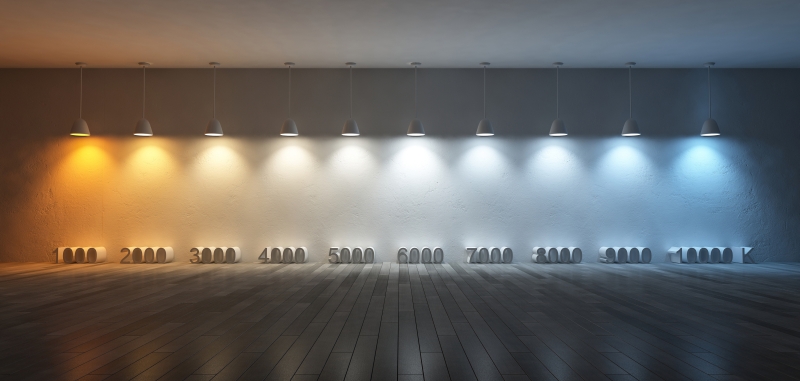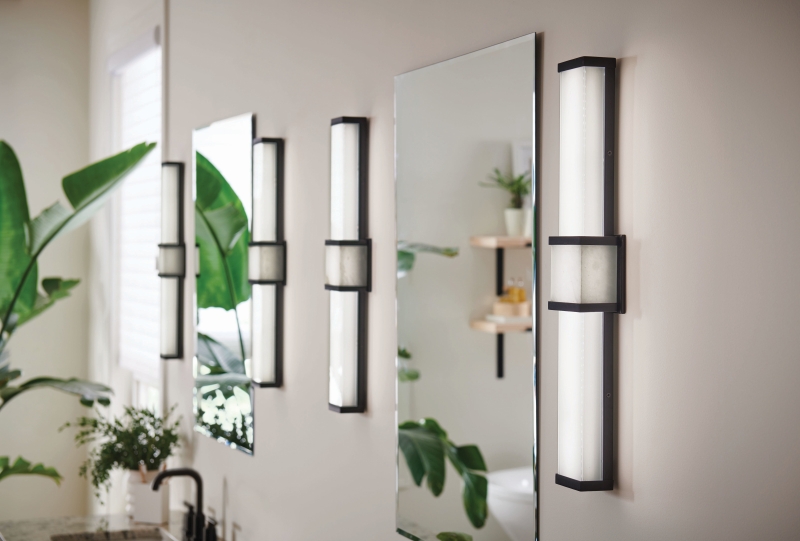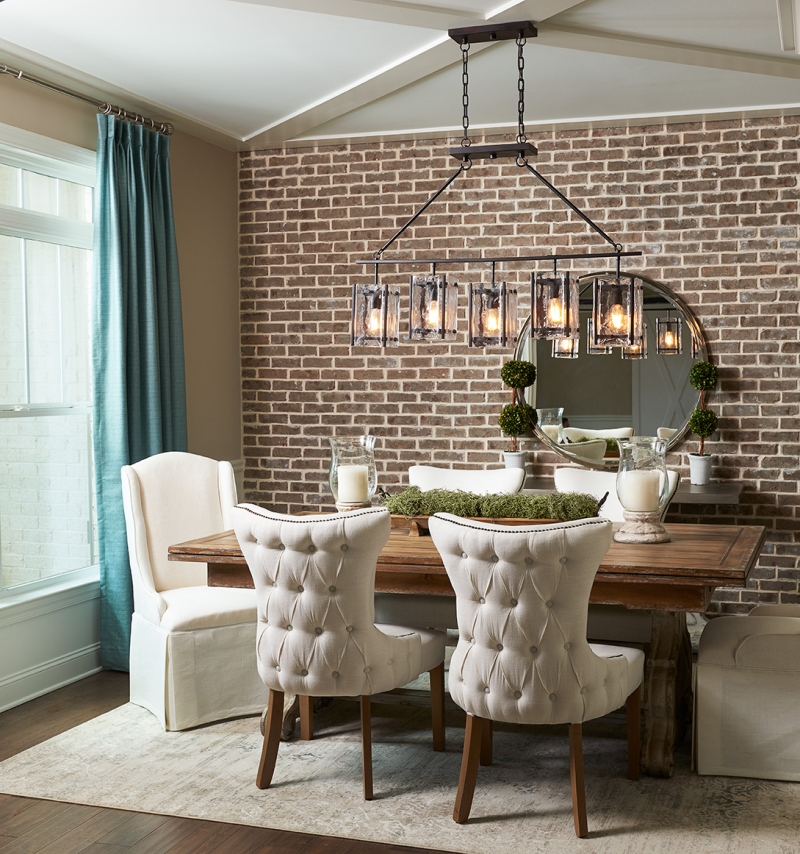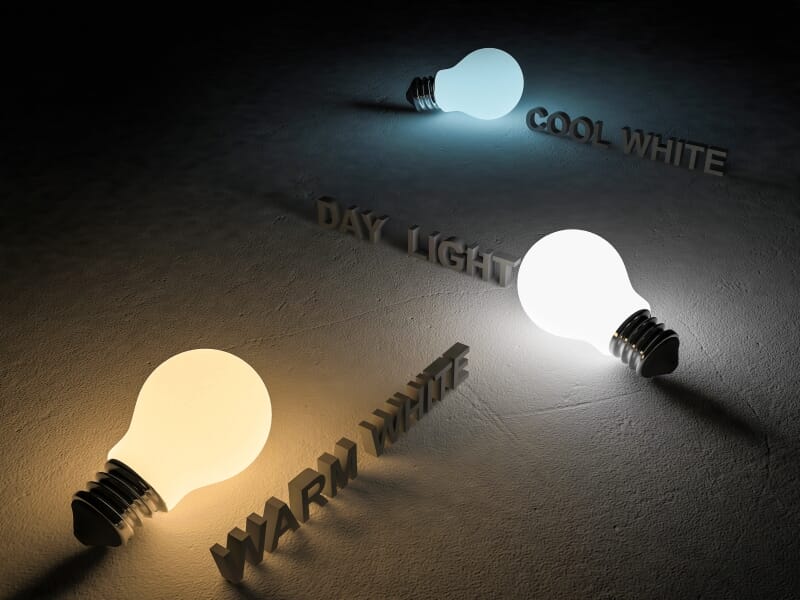When you walk into a low-lit restaurant, you may notice how the lighting is used to create an ambiance of intimacy. Contrast this with the bright, vibrant lights in a department store. Both are using a concept known as “color temperature.” Color temperatures sit on a spectrum that, in the simplest terms, can be described from warmest to coolest, measured numerically in degrees Kelvin. Here’s an example of different color temperatures side by side:

Color temperatures are an aspect of lighting design that can help determine a room’s atmosphere, including those in your own home. Here’s how you can use color temperature to achieve the effects you want from your lighting.
The Benefits of Cool Lights
The term “cool lights” might not mean what you think: They aren’t generally used to create a calm, cooland collected atmosphere. Cool lights are typically anything above 4000 degrees Kelvin (4000K) and have a bright white, sometimes even bluish, color tone. This lighting temperature is used to foster a vibrant, clean and alert setting. Use these lights in your home when you want to create a lighting environment that mimics daylight, especially in spaces that you use purposefully. Fluorescent lighting is one example of cool lighting.
How to Feature Cool Lights in Your Home
There probably aren’t too many spaces in your home where you want cool lights to take center stage. That’s why you’ll usually find cool lights in bathrooms, garages and occasionally in sunrooms. Cool lights may be paired with accent lights in warmer, yellow tones to provide a more inviting background. If you opt for cool lighting in larger bathrooms or sunrooms, you may also want to consider installing chandeliers with fans to help create a more comfortable space on hot days.

The Benefits of Warm Lights
Warm lights are a versatile lighting style that can help you create a cozy and welcoming atmosphere. Warm light includes candle lights, along with warm white LED and incandescent light sources, which tend to have a color temperature of around 2700K. Warm light offers some of the properties associated with cooler lighting but balances this with a hint of warmth from yellow hues.
How to Feature Warm Lights in Your Home
When you want to create a relaxed and inviting environment in your home, your attention will probably turn to your dining room, living room, family room, bedroom or other gathering space. Dining rooms with beautiful dining room chandeliers can use warm lights to the same effect as fine restaurants. Warm lights help a room feel more intimate and comfortable, especially those rooms where your family and friends meet and talk to one another.

While you may have had an intuitive understanding of what color light bulbs you wanted to use in specific rooms, you can now begin to cultivate further knowledge of the color temperature spectrum’s impacts. You can analyze how color temperatures used in public spaces can impact your experience and determine whether you want to mimic those effects in your own home. When you’re trying to incorporate particular lighting styles into your home, use color temperatures to help refine the atmosphere of your living space.
About LightsOnline
When you want to refresh your home’s look, LightsOnline offers the lighting fixtures you need to take your living space to a new level. With over 50 years of experience in the lighting industry, the staff at LightsOnline can help you find high-quality lighting that will fit your home and your budget. Their wide selection of lighting fixtures and ceiling fans, including Minka Aire fans, can transform how you experience your home. Turn to LightsOnline when you’re ready to reimagine and redefine your lighting.
Find lighting fixtures to enhance the effect of warm and cool lighting at www.lightsonline.com
Read more:





March 9, 2021
[…] may be asking “what exactly, is color temperature?” Color temperature refers to how “warm” (yellowish/reddish) or cool (bluish) a tint of white appears in […]